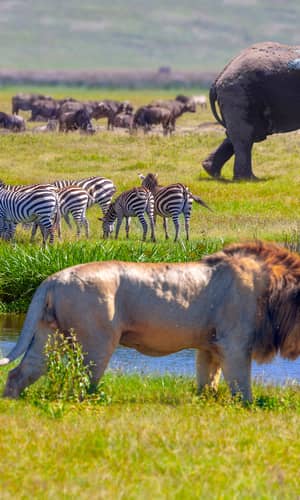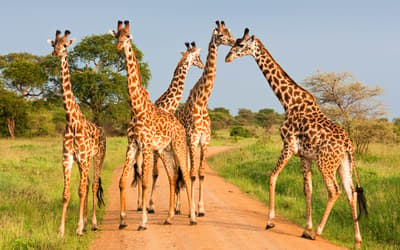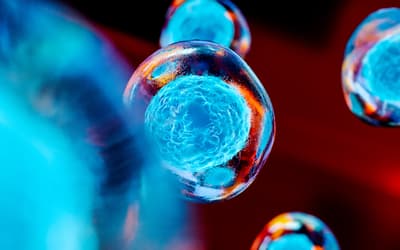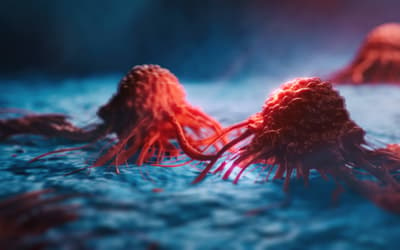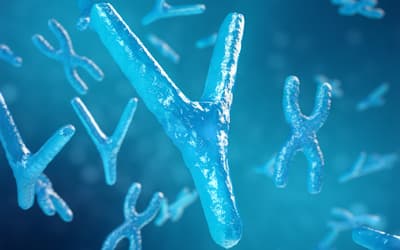The views expressed in this paper are those of the writer(s) and are not necessarily those of the ARJ Editor or Answers in Genesis.
Abstract
According to the Genesis record of Creation, God created various kinds of things to reproduce their own kind. It has become customary to refer to the created kinds as natural kinds. To assume that “natural kind” is a mere biological concept rather than a metaphysical concept would be a mistake. This mistake has the unfortunate result that Christians find it difficult if not impossible to evaluate and correct rival views to created kinds. The aim in this paper is to help correct this state of affairs. Section I presents the biblical picture of created natural kinds, and Section II employs philosophy to clarify important metaphysical distinctions in support and defense of the biblical assumptions and beliefs stipulated in Section I. Special emphasis will be laid on persons. It is hoped that the end result will serve as an apologetic for the truth of Scripture in today’s scientific and evolutionized world.
Keywords: change, creation, kind, evolution, metaphysics, natures, person, species, substance
Introduction
Is the Genesis record of creation compatible with the evolutionary story of origins, “evolved species” and change? Many Christians believe it is. A case in point is The BioLogos Foundation, which consist of a group of Christians—scientists, scholars, philosophers, theologians, pastors and educators—who believe “that evolution, properly understood, best describes God’s work of creation” (BioLogos 2011). Yet “Darwinists today claim that life arose spontaneously from non-life and that descent with modifications gives rise to new species through random mutations and survival of the fittest” (Bonnette 2007, p. 1). With regard to human beings, “most evolutionists maintain that man is merely a highly-developed animal, differing in complexity from lower animals, but not in kind” (Bonnette 2007, p. 2). Genetics Professor R. J. Berry put it the following way:
Once we accept that creation might have occurred over more than six times twenty-four hours [i.e., the six literal 24-hour days of creation in Genesis 1], the extent of change in creation can be appreciated: from nothing to something, from inorganic to organic, from animals to humans (Berry 2007, p. 3).
If this is true, then the Genesis record of creation is false.1
For biologist Professor John Wilkins, who believes that “kinds are not exact in reproduction,” therefore, “that the Genesis account is [not] enough to prohibit evolution,” any “decent species conception is” and will be “biological” (Wilkins 2006, p. 5). This means that theorists who adopt an evolutionary (biological) conception of kinds (“species”) classify organisms in terms of their “accidental differences,”2 as opposed to their natures or essences (Bonnette 2007, p. 2). The fact of the matter is that Darwin’s theory of evolution has made belief in metaphysical natures, more specifically, unchanging natures quite untenable to hold (cf. Hull 1989; Mayr 1987). In other words, organisms are nothing but physical biological entities (particulars, properties, and relations). In reference to human persons, biologist Dr. Francis Crick held that
You, your joys and your sorrows, your memories and ambitions, your sense of personal identity and free will, are in fact no more than the behavior of a vast assembly of nerve cells and their associated molecules (quoted by Wertheim 2004, p. 1).
It follows that any biblical contribution to the study of living organisms in terms of immaterial (metaphysical) entities will be suspect.3
The aim of this paper is to correct this state of affairs. Section I presents the biblical picture of created natural kinds, followed with a brief discussion of the data. Section II employs philosophy to clarify important metaphysical distinctions in support and defense of the biblical assumptions and beliefs stipulated in Section I. Special emphasis will be laid on persons.
Section I: The Biblical Record of Creation and Evolutionary Theory
Created kinds
According to Scripture,
- “God said, ‘Let the earth sprout vegetation, plants yielding seed, and fruit trees bearing fruit after their kind, with seed in them, on earth’; and it was so” (Genesis 1:11).
- “And God created the great sea monsters, and every living creature that moves, with which the water swarms after their kind, and every wing bird after its kind; and God saw that it was good. And God blessed them, saying, ‘Be fruitful and multiply . . .’ Then God said, ‘Let the earth bring forth living creatures after their kind: cattle and creeping things and beasts of the earth after their kind’; and it was so” (Genesis 1:21–25).
- “Then God said: ‘Let Us make man in Our image, according to Our likeness . . . and God created man in His own image, in the image of God He created him; male and female He created them” (Genesis 1:26–27; cf. Genesis 2:7).
- “. . . In the day when God created man, He made him in the likeness of God. He created them male and female . . . . When Adam had lived one hundred and thirty years, he became the father of a son in his own likeness, according to his image, and named him Seth” (Genesis 5:1–3).
- “All flesh is not the same flesh, but there is one flesh of men, and another flesh of beasts, and another flesh of birds, and another of fish” (1 Corinthians 15:39).
- “For every species [lit. kind/nature] of beasts and birds, of reptiles and creatures of the sea, is tamed, and has been tamed by the human race [lit. nature]” (James 3:7); “Can a fig tree, my brethren, produce olives, or a vine produce figs . . .” (v. 12).
These texts, together with Genesis 1:1, make it impossible to conceive of the Creation without a Creator, or of design without a Designer (cf. Isaiah 40:12–14). This is precisely how king David thought about it when he wrote that Creation is the work of God and declares His glory (Psalm 19:1–2). The apostle Paul declared that “we are also His workmanship, created in Christ Jesus” and the psalmist asked, “He who planted the ear, does He not hear? He who formed the eye, does He not see?” (Psalm 94:9). It is evident from the texts quoted above that each of the created things was of a certain kind, which we refer to as “natural kinds.” Each of the created kinds was created in mature form, thus ready to reproduce their own kind. From this follows that every member of a particular created kind would have shared in the essential nature of the created kind from which they stem. Further, the Creator must have endowed the created kinds with a set of natural capacities to do certain things, otherwise reproduction and functioning in their respective environments would not have been possible. If each created natural kind has been endowed with inherent limits and fixed boundaries beyond which kind variation would not go, then it is natural to think that it is impossible for a fruit tree to produce an animal, and impossible for an animal to produce a human being, although natural to think that members of, for example, the dog kind to interbreed and produce varieties of the dog kind.4
These facts about created kinds as natural kinds are succinctly captured by the concept of baramin.
These facts about created kinds as natural kinds are succinctly captured by the concept of baramin, a concept derived from the Hebrew words bara (“create”) and min (“kind”) (Frair 1999, p. 5). That baramin reproduce only their own kind “is clearly seen (or rather not seen) in our world today, as there are no reports of dats (dog + cat) or hows (horse + cow)” (Purdom and Hodge 2008, p. 1). Even if two animals or fruits can produce a hybrid, the members will still be of the same kind (for example, mules—from horse and donkey, and pluots—from a plum and apricot). The question now is, what is it that ensures sameness of kind, if changes over time occurs?
A clue to this question is found in the word “species” in James 3:7 (NASB), which is wrongly translated from the Greek word phusis, as it ought to be kind (Vine 1984, p. 621).5 The word phusis in turn derives from phuō, meaning “to bring forth or produce.” As such it signifies “the nature (that is, the natural powers and constitution) of a person or thing” (Vine 1984, p. 775). Now if every created kind has a nature peculiar to it, then we can say at least four things about it. First, it is the inherent or implanted nature of something that makes it a natural kind. In other words, it answers the question: What is it that makes something the kind of thing that it is? Second, the nature determines what kinds of activities are appropriate and natural for that entity (for example, for a dog to bark and a cat to purr). Stated differently, the capacities of every particular kind of entity are grounded in the nature of that entity. Third, an entity’s nature is the possessor and the unifier of all its various properties (for example, capacities, attributes, tendencies, dispositions and parts). And fourth, the nature accounts for the continuity and identity of the entity through change over time.
It should be clear that a natural kind possess an essential nature that is not to be understood as a mere biological concept. It is rather a metaphysical concept, such as the soul, because it focuses attention on the most fundamental aspects of reality and that which grounds both physical and non-physical functions of a natural entity. Christian naturalists, such as theologian Joel Green (1998) and neuropsychologist Malcolm Jeeves (2005) disagree; for them the soul is not a unique characteristic of human beings. In the words of Green, “we err when we imagine that it is the ‘soul’ that distinguishes humanity from non-human creatures” (Green 1998, p. 3). In other words, in the spirit of evolutionary theory, there is no discontinuity between created natural kinds. Jeeves’ argument is that
the word translated “soul” in Genesis 2:7 is a word that has already appeared in Genesis 1:20, 21, 24, and 30 where in every case it refers to animals . . . (Jeeves 2005, p. 172).
However, when Creation is viewed as the product of an intelligent Creator/Designer, then this particular argument disappears; there is no obstacle to saying that the Designer of the soul can incorporate it into kinds of organisms that share similarities. Consider an analogy. An engineer would not be surprised to find similar ignition switches in different kinds of vehicles produced by the same manufacturer. So Christians who admit the existence of an all-powerful and intelligent Creator need not be surprised to find similar features in creatures with a soul. Interestingly enough, Christian naturalists miss two important points: none of the non-human creatures have been created in the image of God (Genesis 1:26–27; James 3:9), and Jesus died only for human persons—amongst other things, in order that they be “renewed to a true knowledge according to the image of the One who created [them]” (Colossians 3:10).
Although we will return to it again in Section II, for now it will suffice to note that the essential nature belongs to what is referred to as a substance—an individual natural kind and its members. There we will focus on our Creator as the complete example of what a substance and person is. But since Purdom and Hodge (2008) alerted Christians to the fact that “species” is a man-made term, in contrast to kind introduced by our Creator, it will be in order to see when and how it happened that kind became species.
Darwin, his heirs and created kinds
Since the acceptance of Darwinian evolution the biblical picture of created natural kinds has undergone some radical changes. It occurred because the idea of created kinds and unchanging natures as depicted in Genesis and elsewhere in Scripture lost its hold on the thinking of scientists and philosophers. This state of affairs set them on a new path, which is clearly noticeable in this famous confession of Darwin in 1844, shortly after an expedition to the Galapagos Islands:
I was so struck with the distribution of the Galapagos organisms, &c. &c., and with the character of the American fossil mammifers &c. &c., that I determined to collect blindly all sort of fact, which could bear any way on what are species . . . At last gleams of light have come, and I am almost convinced (quite contrary to the opinion I started with) that species are not (it is like confessing a murder) immutable (cited by Denton 1986, p. 34).
However, for Darwin this was just the beginning. In 1871 he expressed his assumptions and beliefs about science and created kinds as follows:
False facts are highly injurious to the progress of science, for they often endure long . . . The main conclusion here arrived at, and now held by many naturalists who are well competent to form a sound judgment is that man descended from some less highly organized form. The ground upon which this conclusion rests will never been shaken, for the close similarity between man and the lower animals . . . are facts which cannot be disputed. The great principle of evolution stands up clear and firm . . . it is incredible that all these facts should speak falsely. He who is not content to look, like a savage, at the phenomena as disconnected, cannot any longer believe that man is the work of a separate act of creation . . . [T]he conclusion is that man is the co-descendant with other mammals of a common progenitor (Baird and Rosenbaum 2007, p. 70).
When Darwin used the word “species” in 1844, it had already been defined in scientific circles as a biological term.
But by and large, the definition had changed so that, instead of there being a dog species (or dog kind), there were many dog species (Hodge 2009, p. 2).
In different words, evolutionists made it appear that the created kinds and the varieties into which they multiplied, were becoming new species (new kinds), “even though the animals did not change into a different kind of animal” (Hodge 2009, p. 2). There are, however, two problems that present themselves to the evolutionist’s assumption that one natural kind can change into another totally different from itself. The one is scientific, and the other metaphysical.
The scientific problem is simply this: One natural kind changing into a totally different kind has never been observed. Non-Christian molecular biologist and physician Michael Denton stated the facts of the matter this way:
Darwin was not only a man of great personal sensibilities but he was also a man of great integrity, especially in scientific matters . . . He was acutely aware that the whole edifice he had constructed in the Origin was entirely theoretical. By its very nature, evolution cannot be substantiated in the way that is usual in science by experiment and direct observation. Neither Darwin not any subsequent biologist has ever witnessed the evolution of one new species as it actually occurs (Denton 1986, p. 55; cf. Hodge 2009; Lightner 2008).
He concluded his book on this note:
The anti-evolutionary thesis argued in this book, the idea that life might be fundamentally a discontinuous phenomenon, runs counter to the whole thrust of modern biological thought. The infusion with the spirit of continuity has been so prolonged and so deeply imbibed that for most biologists it has become quite literally inconceivable that life might not be a continuous phenomenon . . . . It is unthinkable that it [the principle of continuity] might not hold. To question it is an offence . . . Put simply, no one has ever observed the interconnected continuum of functional forms linking all known past and present species of life. The concept of the continuity of nature has existed in the mind of man, never in the facts of nature” (Denton 1986, p. 353; emphasis in the original).
Indeed, the “concept of the continuity of natural kinds has existed in the mind of man, never in the facts of nature” or in the mind of the Creator.
The metaphysical problem is this: If natural kinds possess an unchanging nature, then evolution would be impossible. In the words of evolutionist Professor Ernst Mayr:
The outstanding characteristic of an essence [essential nature] is its unchanging permanence . . . . If species had such an essence, gradual evolution would be impossible (Mayr 1987, p. 156).
With this statement naturalist philosopher David Hull was in full agreement:
The implication of moving species from the metaphysical category that can be appropriately be characterized in terms of “natures” to a category for which such characterizations are inappropriate are extensive and fundamental. If species evolve in anything like the way that Darwin thought they did, then they cannot possibly have the sort of natures that traditional philosophers claimed they did. If species in general lack natures, then so does Homo sapiens as a biological species. If Homo sapiens lacks a nature, then no reference to biology can be made to support one’s claims about “human nature.” Perhaps all people are “persons,” share the same “personhood,” etc. but such claims must be explicated and defended with no reference to biology. Because so many moral, ethical, and political theories depend on some notion or other of human nature, Darwin’s theory brought into question all these theories (Hull 1989, pp. 74–75).
There is therefore just one strategy left for the evolutionist to follow, if he or she wishes to continue to believe in evo
Section II: Natural Kinds and Metaphysical Distinctions
The discussion of created kinds has shown that a kind’s nature answers the question of what it is that makes something the thing it is. This means that it would be a mistake to view the nature of a natural kind as a mere human, conceptual construct. The task will now be to clarify crucially important metaphysical distinctions in order to be true to our biblical beliefs in natural kinds.
Substances and aggregated things6
Substance is a term that refers to all individual natural kinds—particular trees, butterflies, dogs and human persons—as the standard, clearest examples of substances. In other words, substances fall into created kinds called natural kinds, for example, a kind of tree, a kind of insect, a kind of dog, and a kind of person. This is explained by virtue of the fact that each member of a natural kind has the very same nature in it. So, understood, this means there is, strictly speaking, no such thing as a tree, insect, dog, or person; there are only kinds of trees, insects, dogs, and persons. Examples of the latter are divine Persons, angelic, and human persons. Thus, although not all persons are human beings, there is no such thing as a human being that is not a person.
A substance7 is assumed to be the most fundamental category of reality for at least four reasons. Firstly, it is that on which the reality of other things depend; they cause things to happen in the world. Secondly, a substance is the locus of reality and self-determination because it is itself a first principle of change and organised unity; a pile of wood cannot turn itself into a bed, and a human body cannot be arranged the way it is in the absence of an actual organising cause. Thirdly, it expresses what an entity truly is. And fourthly, if a substance is to change in its essential nature, it will cease to exist; if my dog Pugsley changes into a fish tomorrow, we will say he exists no more, and a fish came to be. Let us consider a peanut and see what we can say about it, after which we will turn our attention to our Creator as a substance and the supreme example of a person.
The first thing we can say about a peanut is that it is the bearer of its own life and properties. In other words, it has its life in itself.8 The second is that it makes other things possible (for example, a root system, a stem, branches, leaves). Put in the reverse, other things depend on the peanut (the substance) for their existence. This leads to a third observation, and that is that it has some definite inherent capacities or abilities. Some are absolute capacities and others first-order, and second-order capacities that have the first-order capacities, and so forth. The peanut has the ultimate capacity to bear fruit, and so the first-order capacity to draw nutrients from the ground. But if it does not grow a root system (develop a second-order capacity), it will be unable to do so. The fourth thing we can say is that it remains the same thing during its development and change into a peanut plant—even though it may lose some leaves and some green leaves may turn brown. The fifth thing is simply this: should the right conditions and environment obtain, it will do what it is naturally capable of doing—grow and bear fruit.
It is revealing that the author of Hebrews informed us that “faith is the assurance of things hoped for, the conviction of the things not seen” (Hebrews 11:1). The word from which “assurance” is translated is the Greek word hupostasis (from hupo, “under” and stasis, “a standing”), which literally means “a standing under” (Vine 1984. pp. 77, 217). As such it refers to the foundation and beginning of something and which allows it to endure. Hebrews 11 shows what faith can and has made possible. Put in the reverse, everything that has been achieved by the people mentioned in verses 4–40 depended on their faith. The evidence is overwhelming. Hence verse 6: “And without faith it is impossible to please Him, for he who comes to God must believe that He is, and that He is a rewarder of those who seek Him.” The etymology of the word substance therefore brings out the fact that it serves as the foundation or beginning of something else and on which other things depend to become real.
We can contrast a substance with an aggregated or bundled thing, such as a computer and table. An aggregated thing derives its existence from something outside itself. It consists of parts that exist prior to the whole, and it loses sameness through change (for example, when it is dismantled and its parts stored somewhere in a room). Its parts retain their identity even when placed in a storeroom, which means that its unity is artificial. In short, an aggregated thing is not the bearer of its own existence. The capacities it has are those imposed on it from the outside. Further insight into the differences between substances and aggregated things and their properties follows below.
God as Cause, Person, and Substance
The discussion will be limited to just three of God’s metaphysical attributes: God being a cause (agent), God’s personhood and God’s unchangeability (immutability).
God as a first-cause
One of the purposes of an analysis of what it means to be a cause is to establish some of the essential properties of the cause. Now if the principle that something cannot come from nothing is a reasonable one, then it is reasonable to think that whatever begins to exist has a cause. But just because everything that exists has a cause does not mean there is an infinite series of causes. There must exist, in other words, a first cause. Christians identify this cause with the Creator, the God of the Bible, who revealed Himself to us as “I AM WHO I AM” (Exodus 3:14). This means that God is metaphysically necessary in His being; His nonexistence is impossible, and He cannot be other than what He is in His divine nature (essence).
As a metaphysically necessary Being...God is prior to and independent of His Creation.
As a metaphysically necessary Being (the ground of existence), God is prior to and independent of His Creation, which is contingent (Colossians 1:17); God could have chosen not to create anything. God as first cause thus explains the origin of everything else (Genesis 1:1). Put in the reverse, other things are dependent on God to become real or exist. This confirms our principle that what exists cannot come from something that does not exist, which means it is a metaphysical principle. Since all temporal things have a definite beginning, including human beings, and God as a necessary Being is the cause of space and time, God must exist atemporally and nonspatially. In other words, God must be “changeless and immaterial, since timelessness entails changelessness and changelessness implies immateriality” (Copan and Craig 2004, p. 253). This, in turn, entails that God must be all-powerful as well as personal, in contrast to impersonal and mindless natural laws, processes, and initial conditions.
It should be clear that God is a divine substance with inherent properties that define His nature. If God, for example, created the property of powerful, then He must have already had the property of being powerful. A different way of saying the same thing is: if God is able to create personhood then He must already be in possession of personhood.
God’s personhood
Why must God be personal? As a personal being, God communicates and provides personal explanations in terms of agent causation and acts of will (cf. Isaiah 40:12–14). Since the only entities we know of that can possess such properties are either minds or abstract objects (numbers, sets, properties and propositions), and we know that the latter cause nothing in the world, the only explanation of consciousness, intelligence, sensations, thoughts, beliefs, desires, and the will is that of a Being of the order of an immaterial mind. The Bible tells us that we have been created by God, in His image, and not we ourselves or any mindless thing or process (Psalm 100:3). Here follows a list of just five of the essential metaphysical attributes of God’s personhood.
- Knowledge, understanding and wisdom:
Do you know about the layers of the thick clouds, the wonders of one perfect in knowledge? (Job 37:16); Great is our Lord, and abundant in strength; His understanding is infinite (Psalm 147:5);
The Lord by wisdom founded the earth; by understanding He established the heavens (Proverbs 3:19). - Sensations and propositional attitudes:
You loved righteousness and hated wickedness (Psalm 45:7);
Do I have pleasure in the death of the wicked, declares the Lord God, rather than that he should turn from his ways and live? (Ezekiel 18:23);
And do not grieve the Holy Spirit of God . . . (Ephesians 4:30). - Thinking:
How precious are your thoughts to me, O God! How vast is the sum of them. If I would count them, they would outnumber the sand (Psalm 139:17–18);
[A nation] . . . if it does evil in my sight by not obeying my voice, then I will think better of the good with which I had promised to bless it (Jeremiah 18:9–10);
For who among men knows the thoughts of a man except the spirit of the man, which is in him? Even so the thoughts of God no one knows except the Spirit of God (1 Corinthians 2:11). - Desires:
Behold, You desire truth in the innermost being, and in the hidden part You will make me know wisdom (Psalm 51:6);
So shall My word be which goes forth from My mouth; it shall not return to Me empty, without accomplishing what I desire . . . (Isaiah 55:11);
So then He as mercy on whom He desires, and He hardens whom He desires (Romans 9:18). - Volition and action:
And all the inhabitants of the earth are accounted as nothing, but He does according to His will in the host of heaven and among the inhabitants of the earth; and no one can ward off His hand or say to Him, What have You done? (Daniel 4:35);
I have come to do Your will, O God (Hebrews 10:7);
Worthy are You, our Lord and our God, to receive glory and honor and power; for You created all things, and because of Your will they existed, and were created (Revelation 4:11).
If God is a perfect being (cf. Matthew 5:48), then it follows that our God is the most supreme example of a person, which means it is consistent that something be both a person and an immaterial spirit. Since this is so, it follows that anything is a person if and only if it bears a relevant similarity to the supreme example (kind). The similarity is therefore personhood and, as we have seen, personhood is constituted by a set of ultimate capacities, none of which are physical. Therefore, neither is personhood. We conclude that the personhood of God explains the personhood of human persons.
The unchangeable nature of God as an immaterial substance
The Bible informs us that “God is spirit” (John 4:24), a living immaterial substance. His immateriality thus entails the divine attribute of incorporeality. As a spirit Being He is neither a body nor embodied (although God Incarnate was both divine and corporeal). As a personal being God is thus of the order of unembodied spiritual mind. In other words, God’s immateriality and personal attributes support the view of a human person as an invisible, immaterial mental, spiritual, and moral substance—a soul. Let us, therefore, clarify a few points.
First, it would be a mistake to think that God, if He is a pure spirit, is only a substance with no complexity in His nature. That is to say, that God as a substance has no distinct properties or attributes. This idea is without biblical foundation (as our list of God’s attributes above clearly demonstrates). A substance has inseparable parts, unlike those of aggregates such as computers and tables. The parts of a substance inhere in the substance that has them as part of its essential nature. It means they cannot be severed from a substance and continue to exist. If God has no essential nature, then God as an entity cannot exist; there will be no I (subject) and thus no person. The idea that God has no properties is therefore plainly false; having knowledge is not the same thing as a desire, and a person may have the one without the other. In God’s case the same entity possesses both properties even while they are distinct.
The second point follows closely from the first. God as a substance remains the same through change. If this is not true of a substance, and God is capable of change, then it follows that
- God is not a perfect being since a perfect being must be incapable of change, and
- if God is capable of change, then the Bible contradicts itself when it informs us that “I, the Lord, do not change” (Malachi 3:6; cf. James 1:17).
So how should we understand these seeming anomalies?
First, a distinction is called for, between intrinsic change and extrinsic change. An apple can change from green to red, and still remain the same apple and identical to itself. This is a case of alteration, and not of change such as burning wood changing into something totally different—ash. This means that God can experience changes in Himself without thereby changing in His essential nature, for example, changing His mind when people repent, experiencing grieve, and so on. Extrinsic change is when something changes in relation to something else, for example, when Joe becomes shorter than his son, which is not an intrinsic change in Joe’s height. What is the relevance to God?
God’s changing does not mean His perfection changes into something else or something less perfect than He intrinsically is. God knowing the beginning and the end, what is now and later the case is, on the contrary, a sign of perfection—He always knows what is happening or what a state of affairs will be. To make it short, God is unchangeable in the biblical sense of being unchangeable in His character and existence—His essential attributes, but capable of changing His mind and attitude when it comes to the world, at least since the beginning of creation. Why? It is difficult to imagine what life would be like in the absence of God’s love for, patience with, and forgiveness of fallen and unrepentant mankind. There is, therefore, no contradiction between God’s unchanging essence and the change in His feelings or acts of will toward the world.
What has been said so far can now be clarified and elucidated with the following important distinctions.
Becoming and Perishing
For many evolutionists the notions of becoming and perishing have always held a very strong attraction. Both these notions involve gaining and losing existence. When James, for example, comes to exist, there must be at least one property that belongs to him, and that is he must be human—at that very moment of his coming to be. By contrast, something that perishes (ceases to be), no longer has this property. The problem is that this principle is often confused with alteration—an apple going sweet and a leaf going from green to red are examples. Alterations are types of change, and before something can change it must exist first, and the thing that changes must exist at the beginning, during the process of change and at the end of the change. In the case of the apple, the apple exists and continues to exist while it is sweet, during the time it changes to being sweet and when it is sweet. An alteration is a case in which a thing changes in the properties it has; it is not the case in which something changes with respect to existence itself. Alteration presupposes existence; it can therefore not be the same thing as a change in existence itself.
Degreed and Nondegreed Properties
A property is an attribute, a quality or characteristic, such as blackness, painfulness, and wisdom. These are examples of degreed properties. One person can, for example, be wiser than another and can experience pain of various degrees of intensity. In contrast, a natural kind—humanness, treeness and the slothness of the sloth—are nondegreed. As such they are either exemplified or not and either completely present or not. They are not like someone walking into a room, with a first step, then a second, until the person finally entered the room. They are all or nothing affairs.
Accidental and Essential Properties
“Accidents” are properties (features, characteristics) of something. They characterise their objects (individuals, particulars) in one way or another. And precisely because they are accidental, their objects are what they are independent of whatever accidents they possess. If an object is a white painted pipe, then it is accidentally so; it does not need to be white to be a pipe. So if the pipe loses its color, it would lose its accidental property of white, but still remain the same pipe and will continue to exist as one. In contrast, essential properties constitute the essential nature of a thing. If we then describe an object’s essential properties, we will be able to say what kind of thing it is. James, for example, is a human kind of thing. If James loses his humanness he will cease to exist. Let us apply this to my dog Pugsley.
Firstly, his ontological nature is a continuant that remains the same through change. In other words, change presupposes sameness and identity. If Pugsley goes from being fawn to being black, then Pugsley must be present at the beginning, during and at the end of the change. While his properties may be changing—he regularly loses old parts and gain new ones (for example, hair) and has a few teeth left—his self, which underlies the change, remains the same through it. Secondly, his nature is a whole that is constituted by inseparable parts, in contrast to an aggregate thing that is constituted by separable parts. The point about this difference is, if he loses an essential part of his being (for example, his nature), he will cease to exist. In other words, an inseparable part is something that cannot exist independently of the whole of which it is a part (as also, for example, the heart or brain). Thirdly, Pugsley’s inner nature sets limits to the kinds of change he can undergo. If he breaks these limits, we will say that Pugsley no longer is. If he goes beyond the boundaries of what his nature allows him to be, for example, if he turns into a cat tomorrow, we would not say that Pugsley lives as a dog; rather, we would say that he no longer lives and a cat came to be.
Capacities and Functions
Substances like a dog, a peanut, or human soul have capacities or potentialities rooted in their inner essential natures. They also have the power to cause things in the real world. Pugsley has a number of capacities (some not actual), for example, the capacity to bark even though, at present, he is silent. He can bark at 24:00 at night and cause my neighbours to wake up; it may cause one or two of them to shout at him and so stop him from barking and so on. The peanut, as we have seen, has the capacity to grow a root system and to change into the shape of a tree.
Although the soul has literally thousands of capacities, the various capacities within the soul fall into natural groupings called faculties. We express this insight, for example, by saying that the ability to see colours is part of the faculty of sight and the ability to think about created natural kinds and natures is a capacity within the thinking faculty (the mind). In other words, each faculty of the soul consists of a natural family of related capacities. Among other things, the soul contains five sensory faculties.
If we take the whole, this entire ordered structure together, then it is the substance’s principle of activity and that which govern the precise, ordered sequence of changes that the substance will go through in the process of growth and development. The essential nature will therefore set the limits of what types of changes the substance can and should undergo as it exists. The nature thus has a purposeful or teleological structure, a principle of unity and an orderly sequence of activities whose unfolding forms body parts in order to realise bodily functions.9 From this follows the next truth: when the soul comes into existence, it begins to direct the development of a body, which means, its nature determines function and not vice versa.10 Thus, if the soul is accepted as an individuated nature, then every living organism is identical to its soul.
Metaphysical and Material Necessity
What we have discussed so far reveals that metaphysical necessity is different from and deeper than material necessity. An object is materially necessary when it exists everywhere the same way and if, and only if, the laws of nature and the same features of matter are present. But the laws and the kind of matter could have been different; matter is also contingent. God could have chosen to create human beings without material bodies. By contrast, something is metaphysically necessary when it must necessarily obtain a certain way and not otherwise. If James is a human and exists, then he is necessarily a human.
Internal and External Relations
A relation (like properties) is a universal; it can be in different places and objects at the same time. It requires one or more entities (for example, properties, particulars) to stand in a certain relation to one another. It is important to draw a distinction between internal and external relations. The various parts of an aggregate thing stand in the form of external relations to each other, just as water in a glass. Neither needs each other; we say they are indifferent to each other. By contrast, an internal relation is in the nature of the entity it connects.
Internal relations are called internal, because they partly constitute the entity to which they are internal. For example, if the relation of the heart to the living human body is internal to the heart, then at least part of what it means to be a heart is to stand in certain relations to the circulation system and, indeed, to the entire body as a whole. If the heart ceases to be related to the body as a whole, it can no longer be a heart, strictly speaking. In contrast, if parts of a computer stand in external relations to each other, then each part can cease to stand in that relation to one another and still exist.
Summary
Properties do not show up in the world by themselves. Substances are the owners of their properties; properties are “in” them, but not like water in a glass. A substance is a whole and is not an entity that “emerges” from interaction between externally related properties, parts, and capacities. A substance’s unity is ontologically prior to its parts, and parts are what they are in virtue of the substance’s nature and their function in the substance as a whole. Put differently, a substance’s capacities are possessed by it solely in virtue of the substance belonging to a natural kind; James’ capacities are his because he belongs to the natural kind “being human.” James as a person or self is thus prior to his or her parts; parts are gathered and formed by the direction of an immaterial soul and its nature taken as a whole.
Now, if a human being is the kind of entity it is, because of the essential properties it intrinsically has, then a description of the faculties, capacities, and functions will provide more accurate information of the kind of thing a human being is than an analysis of the brain. In other words, if the nature of the soul (a substance) is a “this-such”—a specific kind of thing—then it is a combination of three metaphysical entities: a universal nature, an individuating part, and the relation that connects them. Understood this way means that the individuating part is ontologically prior to its body; the substance stands under its body and develops it according to its nature, and James is therefore identical to being human and has a body/brain.11
Concluding Remarks
This paper laid out, albeit briefly, the biblical record of created natural kinds, followed by an investigation into the metaphysical issues involved in thinking about essential natures and substances. A short paper cannot treat all the issues necessary to justify adequately the positions taken. If, however, we accept as truth the biblical record of creation, then three things follow: first, radical empiricism—the idea that knowledge and justified beliefs are limited to what we can see, touch, smell, hear, and taste—is false. There are many things we know that are not limited to the senses; second, physicalism—the idea that the only things that exist are matter—is false. Neither the properties, nor the individuated essential natures that constitute substances are material entities; third, the evolutionary story of origins, “evolved species” and non-existent natures is false as well. Created natural kinds are endowed with unchanging essential natures by their Creator.
The metaphysics matter therefore enormously, and evolutionary metaphysics deserves closer scrutiny. They are important for biblical Christians who wish to be “ready to make a defense to everyone who asks [of them] to give an account for the hope that is in [them]” (1 Peter 3:15).
Acknowledgments
I wish to thank the reviewers of this paper for a number of very helpful and appreciated suggestions.
References
Baird, R. B. and S. E. Rosenbaum. 2007. Intelligent design. Science or religion? Critical perspectives. New York: Prometheus Books.
Bergman, J. 2010. Why orthodox Darwinism demands atheism. Answers Research Journal 3:147–152.
Berry, R. J. 2007. Creation and evolution. Not creation or evolution. Faraday Paper 12:1–4. Retrieved on March 11, 2011, from https://www.faraday.cam.ac.uk/wp-content/uploads/resources/Faraday%20Papers/Faraday%20Paper%2012%20Berry_EN.pdf.
BioLogos. 2011. About the BioLogos Foundation. Retrieved on March 11, 2011, from www.biologos.org/about.
Bonnette, D. 2007. Did Darwin prove Genesis a fairy tale? Social Justice Review 98:7–8. Retrieved on March 8, 2011, from www.godandscience.org/evolution/darwin_genesis_fairy_tale.html.
Brown, W. S, and M. A. Jeeves. 1999. Portraits of human nature: Reconciling neuroscience and Christian anthropology. Science and Christian Belief 11, no. 2:139–150.
Copan, P. and W. L. Craig. 2004. Creation out of nothing. A biblical, philosophical, and scientific exploration. Grand Rapids, Michigan: Baker Academic.
Dembski, W. A. ed. 1998. Mere creation. Science, faith and intelligent design. Downers Grove, Illinois: Inter-Varsity Press.
Denton, M. 1986. Evolution: A theory in crisis. New developments in science are challenging orthodox Darwinism. Chevy Chase, Maryland: Adler & Adler Publishers.
Frair, W. 1999. Creationist classification—An update. Creation Matters 4, no. 1:1–8. Retrieved on March 8, 2011, from www.creationresearch.org/creation_matters/pdf/1999/cm0401.pdf.
Green, J. B. 1998. Body and soul, mind and brain: Pressing questions. Retrieved on March 18, 2011, from www.catalystresources.org/issues/312green.html<.
Green, J. B. 2009. Out-of-body experiences; what do they mean? Retrieved on March 18, 2011, from signstimes.com/?p=article&a=40027604761.645.
Grigg, R. 1996. How long were the days of Genesis 1? What did God intend us to understand from the words He used? Creation 19, no. 1:23–25. Retrieved on March 8, 2011, from creation.com/how-long-were-the-days-of-genesis-1.
Ham, K. 2001. The big picture. Being wrong about the six days of creation does not automatically mean someone is not a Christian. But if you think that makes it unimportant, stand back and look at the big picture . . . . Creation Ex Nihilo 23, no. 2:16–18. Retrieved on February 9, 2011, from www.answersingenesis.org/creation/v23/i2/bigpicture.asp.
Ham, K. 2007. Couldn’t God have used evolution? In The New Answers Book, ed. K. Ham. Green Forest, Arkansas: Master Books. Retrieved on February 2011, from www.answersingenesis.org/articles/nab/couldnt-god-have-used-evolution.
Ham, K., T. Mortenson, and C. Wieland. 2003. Are (biblical) creationists “cornered”?—A response to Dr. J. P. Moreland. TJ 17, no. 3: 43–50.
Hodge, B. 2009. “Fixity of species. A lesson in changing definitions.” Answers in Genesis. Retrieved on March 5, 2011.
Hull, D. 1989. The metaphysics of evolution. Albany, New York: State University of New York Press.
Jeeves, M. 2005. Neuroscience, evolutionary psychology, and the image of God. Perspectives on Science and Christian Faith 57, no. 3:170–186.
King, P. 2000. The problem of individuation in the Middle Ages. Theoria 66:159–184.
Lamoureux, D. 2010. Was Adam a real person? Part I. Retrieved on March 11, 2011, from biologos.org/blog/was-adam-a-real-person-part-i.
Lightner, J. 2008. Life: Designed by God to adapt. Retrieved on March 5, 2011, from www.answersingenesis.org/articles/aid/v3/n1/life-designed-to-adapt.
Louw, J. P. and E. A. Nida. 1988. Greek-English lexicon of the New Testament based on semantic domains. New York: United Bible Societies.
Mayr, E. 1987. The ontological status of species: Scientific progress and philosophical terminology. Biology and Philosophy 2, no. 2:145–166. Retrieved on March 8, 2011, from mechanism.ucsd.edu/teaching/philbio/readings/mayr.ontologicalstatusofspcies.1987.pdf.
Moreland, J. P. 2001. Universals. London, Ontario: McGill-Queen’s University Press.
Moreland, J. P. and D. M. Ciocchi, eds. 1993. Christian perspectives on being human. A multidisciplinary approach to integration. Grand Rapids, Michigan: Baker Books.
Moreland, J. P. and S. B. Rae. 2000. Body & soul. Human nature & the crisis in ethics. Downers Grove, Illinois: Inter-Varsity Press.
Mortenson, T. 2004. Philosophical naturalism and the age of the earth: are they related? The Master’s Seminary Journal 15, no. 1:71–92.
Mortenson, T. 2009a. Creation theodicy in light of Genesis and modern science: A young-earth creationist response to William Dembski. Answers Research Journal 2:151–167.
Mortenson, T. 2009b. Systematic theology texts and the age of the earth: A response to the views of Erickson, Grudem, and Lewis and Demarest. Answers Research Journal 2:175–200.
Murphy N. 2006. Bodies and souls, or spirited bodies? Cambridge, New York: Cambridge University Press.
Purdom, G., and B. Hodge. 2008. “Zonkeys, ligers, and wolphins, Oh my!” Retrieved on March 5, 2011.
Vine, W. E. 1984. The expanded Vine’s expository dictionary of New Testament words, ed. J. R. Kohlenberger. Minneapolis, Minnesota: Bethany House Publishers.
Wells, J. 1996. Unseating naturalism. Recent insights from developmental biology. In Mere creation. Science, faith and intelligent design, ed. W. A. Dembski, pp. 51–70. Downers Grove, Illinois: Inter-Varsity Press.
Wertheim, M. 2004. Scientists at work: Francis Crick and Christof Koch; After the double helix: Unravelling the mysteries of the state of being. The New York Times, April 13, 2004. Retrieved on March 13, 2011, from www.nytimes.com/2004/04/13/science/scientists-work-francis-crick-christof-koch-after-double-helix-unraveling.html.
Wilkins, J. 2006. Species, kinds, and evolution. Reports of the National Center for Science Education 26:4. Retrieved March 18, 2011, from ncse.com/rncse/26/4/species-kinds-evolution.
Zerwick, M. 1988. A grammatical analysis of the Greek New Testament. Trans. M. Grosvenor. Rome: Biblical Institute Press.
